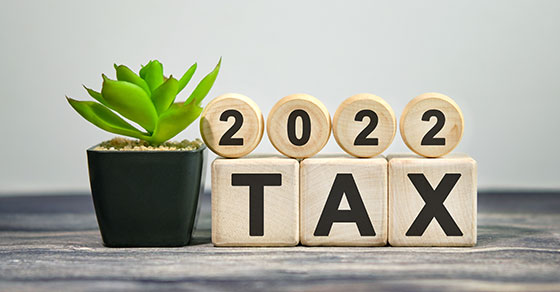Self-employed? Build a nest egg with a solo 401(k) plan
Do you own a successful small business with no employees and want to set up a retirement plan? Or do you want to upgrade from a SIMPLE IRA or Simplified Employee Pension (SEP) plan? Consider a solo 401(k) if you have healthy self-employment income and want to contribute substantial amounts to a retirement nest egg.
This strategy is geared toward self-employed individuals including sole proprietors, owners of single-member limited liability companies and other one-person businesses.
Go it alone
With a solo 401(k) plan, you can potentially make large annual deductible contributions to a retirement account.
For 2022, you can make an “elective deferral contribution” of up to $20,500 of your net self-employment (SE) income to a solo 401(k). The elective deferral contribution limit increases to $27,000 if you’ll be 50 or older as of December 31, 2022. The larger $27,000 figure includes an extra $6,500 catch-up contribution that’s allowed for these older owners.
On top of your elective deferral contribution, an additional contribution of up to 20% of your net SE income is permitted for solo 401(k)s. This is called an “employer contribution,” though there’s technically no employer when you’re self-employed. (The amount for employees is 25%.) For purposes of calculating the employer contribution, your net SE income isn’t reduced by your elective deferral contribution.
For the 2022 tax year, the combined elective deferral and employer contributions can’t exceed:
- $61,000 ($67,500 if you’ll be 50 or older as of December 31, 2022), or
- 100% of your net SE income.
Net SE income equals the net profit shown on Form 1040 Schedule C, E or F for the business minus the deduction for 50% of self-employment tax attributable to the business.
Pros and cons
Besides the ability to make large deductible contributions, another solo 401(k) advantage is that contributions are discretionary. If cash is tight, you can contribute a small amount or nothing.
In addition, you can borrow from your solo 401(k) account, assuming the plan document permits it. The maximum loan amount is 50% of the account balance or $50,000, whichever is less. Some other plan options, including SEPs, don’t allow loans.
The biggest downside to solo 401(k)s is their administrative complexity. Significant upfront paperwork and some ongoing administrative efforts are required, including adopting a written plan document and arranging how and when elective deferral contributions will be collected and paid into the owner’s account. Also, once your account balance exceeds $250,000, you must file Form 5500-EZ with the IRS annually.
If your business has one or more employees, you can’t have a solo 401(k). Instead, you must have a multi-participant 401(k) with all the resulting complications. The tax rules may require you to make contributions for those employees. However, there’s an important loophole: You can exclude employees who are under 21 and employees who haven’t worked at least 1,000 hours during any 12-month period from 401(k) plan coverage.
Bottom line: For a one-person business, a solo 401(k) can be a smart retirement plan choice if:
- You want to make large annual deductible contributions and have the money,
- You have substantial net SE income, and
- You’re 50 or older and can take advantage of the extra catch-up contribution.
Before you establish a solo 401(k), weigh the pros and cons of other retirement plans — especially if you’re 50 or older. Solo 401(k)s aren’t simple but they can allow you to make substantial and deductible contributions to a retirement nest egg. Contact us before signing up to determine what’s best for your situation.
© 2022


